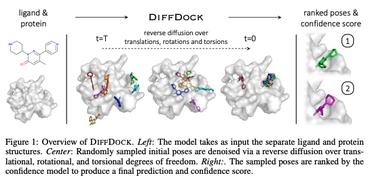Search Results for author: Kunyang Sun
Found 7 papers, 4 papers with code
AIR-DA: Adversarial Image Reconstruction for Unsupervised Domain Adaptive Object Detection
no code implementations • 27 Mar 2023 • Kunyang Sun, Wei Lin, Haoqin Shi, Zhengming Zhang, Yongming Huang, Horst Bischof
This results in an imbalance of the adversarial training between the domain discriminator and the feature extractor.
MATE: Masked Autoencoders are Online 3D Test-Time Learners
1 code implementation • ICCV 2023 • M. Jehanzeb Mirza, Inkyu Shin, Wei Lin, Andreas Schriebl, Kunyang Sun, Jaesung Choe, Horst Possegger, Mateusz Kozinski, In So Kweon, Kun-Jin Yoon, Horst Bischof
Our MATE is the first Test-Time-Training (TTT) method designed for 3D data, which makes deep networks trained for point cloud classification robust to distribution shifts occurring in test data.
LIMO: Latent Inceptionism for Targeted Molecule Generation
1 code implementation • 17 Jun 2022 • Peter Eckmann, Kunyang Sun, Bo Zhao, Mudong Feng, Michael K. Gilson, Rose Yu
We corroborate these docking-based results with more accurate molecular dynamics-based calculations of absolute binding free energy and show that one of our generated drug-like compounds has a predicted $K_D$ (a measure of binding affinity) of $6 \cdot 10^{-14}$ M against the human estrogen receptor, well beyond the affinities of typical early-stage drug candidates and most FDA-approved drugs to their respective targets.
CycDA: Unsupervised Cycle Domain Adaptation from Image to Video
1 code implementation • 30 Mar 2022 • Wei Lin, Anna Kukleva, Kunyang Sun, Horst Possegger, Hilde Kuehne, Horst Bischof
To address these challenges, we propose Cycle Domain Adaptation (CycDA), a cycle-based approach for unsupervised image-to-video domain adaptation by leveraging the joint spatial information in images and videos on the one hand and, on the other hand, training an independent spatio-temporal model to bridge the modality gap.
Mining for Potent Inhibitors through Artificial Intelligence and Physics: A Unified Methodology for Ligand Based and Structure Based Drug Design
no code implementations • 5 Oct 2021 • Jie Li, Oufan Zhang, Yingze Wang, Kunyang Sun, Xingyi Guan, Dorian Bagni, Mojtaba Haghighatlari, Fiona L. Kearns, Conor Parks, Rommie E. Amaro, Teresa Head-Gordon
The viability of a new drug molecule is a time and resource intensive task that makes computer-aided assessments a vital approach to rapid drug discovery.
ECS-Net: Improving Weakly Supervised Semantic Segmentation by Using Connections Between Class Activation Maps
no code implementations • ICCV 2021 • Kunyang Sun, Haoqing Shi, Zhengming Zhang, Yongming Huang
Image-level weakly supervised semantic segmentation is a challenging task.
BlendMask: Top-Down Meets Bottom-Up for Instance Segmentation
9 code implementations • CVPR 2020 • Hao Chen, Kunyang Sun, Zhi Tian, Chunhua Shen, Yongming Huang, Youliang Yan
The proposed BlendMask can effectively predict dense per-pixel position-sensitive instance features with very few channels, and learn attention maps for each instance with merely one convolution layer, thus being fast in inference.
 Ranked #13 on
Real-time Instance Segmentation
on MSCOCO
Ranked #13 on
Real-time Instance Segmentation
on MSCOCO






